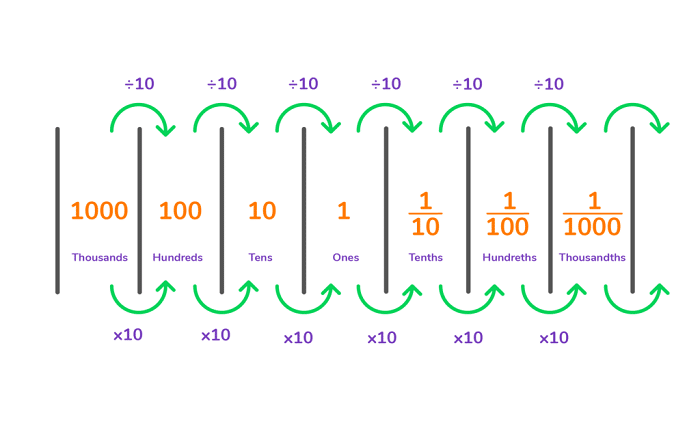
Introduction
Decimal places play a crucial role in both mathematics and everyday life. Understanding how to use and manage decimal places is essential for accuracy in calculations, measurements, and data analysis. In this comprehensive guide, we’ll explore the concept of decimal places, their significance, and practical applications.
What are Decimal Places?
Decimal places refer to the digits that appear after the decimal point in a number. These digits represent fractions of a whole number and are critical for expressing values with precision. Whether you are dealing with currency, measurements, or scientific data, decimal places ensure that your calculations are accurate and meaningful.
The Importance of Decimal Places in Mathematics
In mathematics, decimal places are used to represent non-integer values. They allow us to perform precise calculations and express results with greater accuracy. For example, the number 3.14 with two decimal places is a more precise representation of the mathematical constant π than the whole number 3.
How to Count Decimal Places
Counting decimal places is straightforward. Starting from the decimal point, count each digit to the right. For instance, in the number 12.345, there are three decimal places. Understanding how to count decimal places is fundamental for performing accurate arithmetic operations and rounding numbers correctly.
Rounding to Decimal Places
Rounding to decimal places is a common practice in various fields. It involves reducing the number of decimal places while maintaining the value’s integrity. For example, rounding 12.345 to two decimal places results in 12.35. Knowing how to round to decimal places helps in simplifying complex numbers without losing significant information.
Decimal Places in Everyday Life
Decimal places are ubiquitous in our daily lives. They are used in financial transactions, measurements, and statistics. When shopping, prices often include decimal places, such as $19.99. Accurate measurement in cooking, construction, and medicine also relies on decimal places to ensure precision.
Decimal Places in Financial Calculations
In finance, decimal places are crucial for accuracy in transactions and accounting. For example, currency values often involve two decimal places, such as $12.34. Interest rates, stock prices, and exchange rates also use decimal places to represent fractional values, ensuring precise financial calculations.
Decimal Places in Scientific Research
Scientific research demands high precision, often requiring multiple decimal places. Measurements in physics, chemistry, and biology use decimal places to report results accurately. For instance, the speed of light is approximately 299,792.458 kilometers per second, with three decimal places indicating precision.
Teaching Decimal Places to Students
Educators emphasize the importance of decimal places in mathematics education. Teaching students how to work with decimal places helps them develop strong numerical skills and prepares them for real-world applications. Activities like rounding, addition, and subtraction with decimal places enhance their understanding and proficiency.
Tools for Managing Decimal Places
Several tools and software applications help manage decimal places in calculations. Spreadsheets like Microsoft Excel and Google Sheets allow users to control the number of decimal places displayed and perform precise arithmetic operations. These tools are invaluable for professionals in finance, engineering, and data analysis.
Conclusion
Mastering decimal places is essential for accuracy and precision in various fields. Whether you are a student, professional, or simply someone dealing with numbers, understanding how to handle decimal places ensures that your calculations and measurements are reliable. By learning the principles of decimal places, you can enhance your numerical proficiency and apply it confidently in everyday life.
FAQs
1. What are decimal places?
Decimal places are the digits that appear after the decimal point in a number, representing fractions of a whole number.
2. Why are decimal places important?
Decimal places ensure accuracy and precision in calculations, measurements, and data analysis across various fields.
3. How do I count decimal places?
Starting from the decimal point, count each digit to the right to determine the number of decimal places.
4. How do I round to decimal places?
Rounding to decimal places involves reducing the number of decimal places while maintaining the value’s integrity, such as rounding 12.345 to 12.35.
5. Where are decimal places used in everyday life?
Decimal places are used in financial transactions, measurements, statistics, and various fields requiring precise numerical values.





